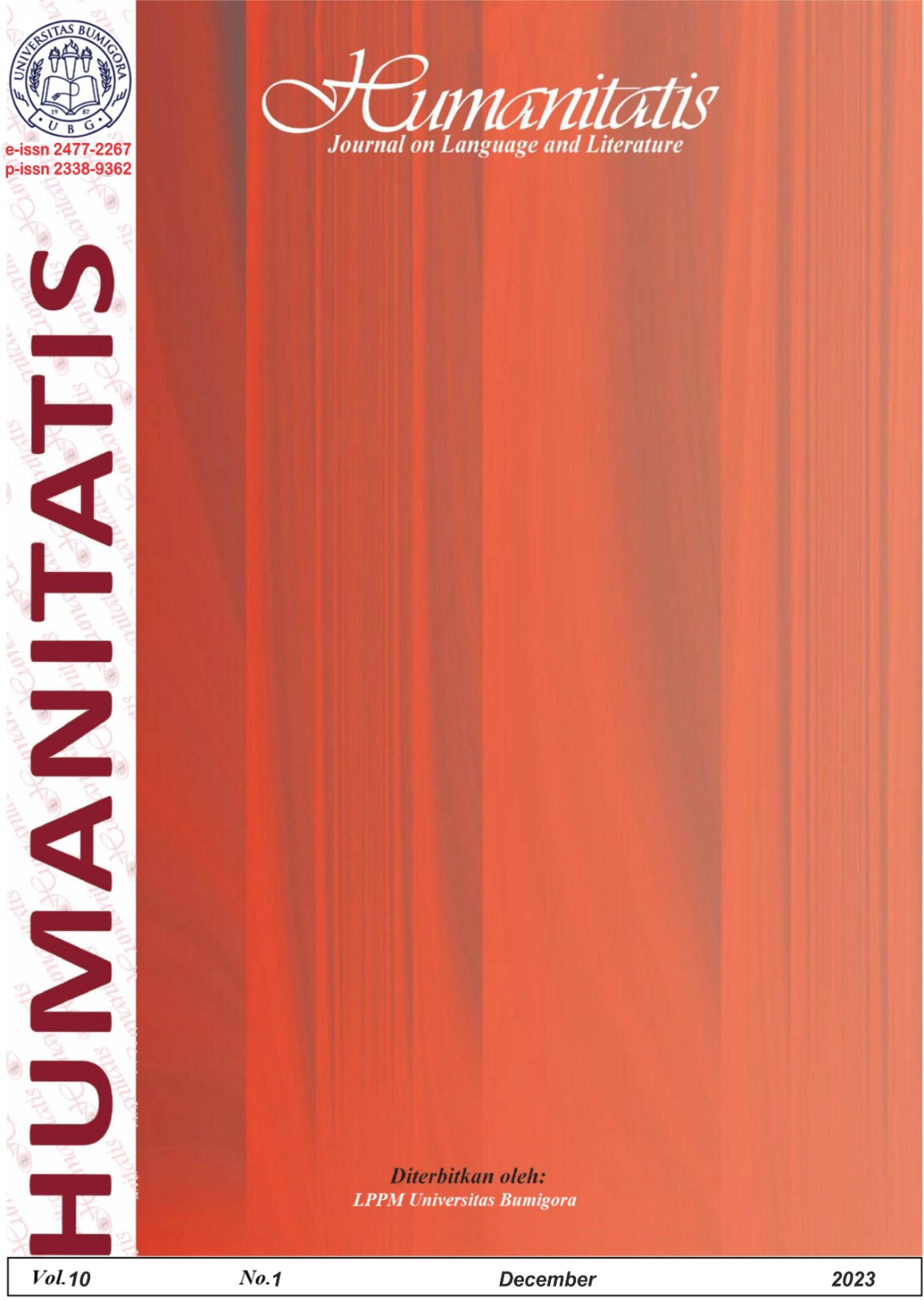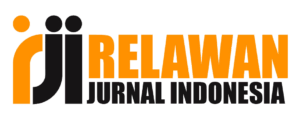The Relationship between Inadequate Teaching Method and Students’ English Learning Difficulties
DOI:
https://doi.org/10.30812/humanitatis.v10i1.3312Keywords:
EFL Students, Inadequate, Learning Difficulties, Teaching MethodAbstract
This research aimed to identify the relationship between inadequate teaching method and student’s English learning difficulties. This research used a quantitative descriptive approach. The data source was the students of the third grade of Junior High School 1 Pringgasela. The data were taken from the observation and questionnaire designed to identify the relationship between inadequate teaching method and student’s English learning difficulties that were shared to the population of the research comprising (90) male and female students to acquire the research objective. Through the finding of the analysis, there were collected about 200 responses from 10 numbers of statements each was answered by 20 students distributed as 10 males and 10 females selected from 90 students as the populations who were then displayed as respective percentage of 50% male and 50% female students. The questionnaire embodied several contexts such as curriculum, teaching method and student’s difficulties in learning English language. The results showed that 113 responses agreed with the statement given, while 87 statements disagreed. The number of responses was presented in terms of percentage as 57% of the respondents agreed while the remaining 43% disagreed. The broader findings will be further discussed.
References
Arghode, V., Brieger, E. W., & McLean, G. N. (2017). Adult Learning Theories: Implications for Online Instruction. European Journal of Training and Development, 14(7), 593–609. https://doi.org/https://www.emerald.com/insight/content/doi/10.1108/EJTD-02-2017-0014/full/html
Asenahabi, B. M. (2019). Basics of Research Design: A Guide to Selecting Appropriate Research Design. International Journal of Contemporary Applied Researches, Vol. 6, No(5), 76–89. https://www.researchgate.net/publication/342354309 _Basics_of_Research_Design_A_Guide_to_selecting_appropriate_research_design.
Cresswell, J. W. (2013). Research design: qualitative, quantitative, and mixed methods approaches. SAGE Publications, Inc. https://www.ucg.ac.me/skladiste/blog_609332/objava_105202/fajlovi/Creswell.pdf
Crystal, D. (2003). English as a Global Language. In The Palgrave Handbook of Economics and Language. Cambridge University press. https://doi.org/10.1007/978-1-137-32505-1
Drewal, H. J. (2020). Sensiotics, or the Study of the Senses in Material Culture and History in Africa and Beyond. The Oxford Handbook of History and Material Culture, 275–294. https://doi.org/https://doi.org/10.1093/oxfordhb/9780199341764.013.24
Gebhard, J. G. (2006). Teaching English as a Foreign or Second Language: A Self-Development and Methodology Guide. In The Modern Language Journal (Second Edi). University of Michigan Press. https://doi.org/10.1111/j.1540-4781.2008.00729_14.x
Harmer, J. (2007). The Practice of English Language Teaching; 4th Edition. Pearson Longman. http://library.lol/main/D1C4D67754CE5045FADBC5B66F47BAE3
Islami, R., Putrawan, G. E., & Riyantika, F. (2021). An analysis of students’ pronunciation errors of friction consonants in spoken production. International Journal of Educational Studies in Social Sciences (IJESSS), 1(2), 81–86. https://doi.org/10.53402/ijesss.v1i2.19
Jazadi, I. (2008). The Politics of Curriculum (An Interpretive Study of English Language Teaching and Learning at High Schools in Indonesia). Paracendekia NW Press.
Kalpana, T. (2014). A Constructivist Perspective on Teaching and Learning: A Conceptual Framework. International Research Journal of Social Sciences, 3(1), 27–29. http://www.isca.in/IJSS/Archive/v3/i1/6.ISCA-IRJSS-2013-186.pdf
Lodico, M. G., Spaulding, D. T., & Voegtle, K. H. (2006). Methods in Educational Research; From Theory to Practice. In Education and Urban Society (Vol. 7, Issue 3). Jossey-Bass. https://doi.org/10.1177/001312457500700301
Marquardt, M., & Waddill, D. (2004). The power of learning in action learning: a conceptual analysis of how the five schools of adult learning theories are incorporated within the practice of action learning. Action Learning: Research and Practice, 1(2), 185–202. https://doi.org/10.1080/1476733042000264146
Mcleod, S. (2015). Operant Conditioning: What It Is, How It Works, and Examples. https://www.simplypsychology.org/operant-conditioning.html
Modrak, D. K. W. (2001). Aristotle’s Theory of Language and Meaning. In Journal of Philosophy (First Edit, Vol. 99, Issue 4). Cambridge University press. https://doi.org/10.5840/jphil200299423
Punch, K. F. (1998). Introduction to Social Research: Quantitative Qualitative Research. SAGE Publications, Inc. http://library.lol/main/9FA95C652B3D8255201985758F7BEBA9
Sari, S. N., & Aminatun, D. (2021). Students’ Perception on the Use of English Movies To Improve Vocabulary Mastery. Journal of English Language Teaching and Learning, 2(1), 16–22. https://doi.org/10.33365/jeltl.v2i1.757
Siemens, G. (2004). Elearnspace. Connectivism: A learning theory for the digital age. Elearnspace. Org, 14–16.
Siswantoro. (2016). Metode Penelitian Sastra; Analisis Struktur Puisi. Pustaka Pelajar. https://inlis.mojokertokab.go.id/opac/detail-opac?id=9620
Vermunt, J. D. H. M., & Van Rijswijk, F. A. W. M. (1988). Analysis and development of students’ skill in selfregulated learning. Higher Education, 17(6), 647–682. https://doi.org/10.1007/BF00143780
Wardaugh, R. (2006). An Introduction to Sociolinguistics. In The British Journal of Sociology (Fifth Edit, Vol. 38, Issue 3). Blackwell Publishing. https://doi.org/10.2307/590702
Webb, M. (2011). Models for Researching Pedagogy with Information and Communications Technologies. Journal of Computer Assisted Learning, 29(1), 53–67. https://doi.org/https://doi.org/10.1111/j.1365-2729.2011.00465.x
















